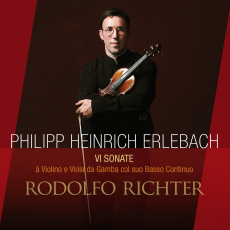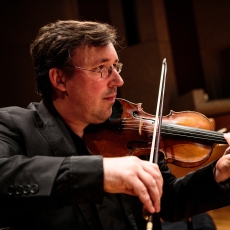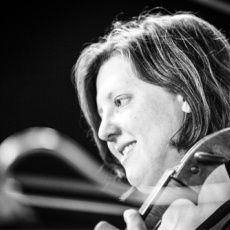Erlebach - Richter - Atlanta Audio Society
German composer Philipp Heinrich Erlebach (1657-1714) is unknown today except to Baroque connoisseurs. But he might have cut a larger figure with posterity had it not been for an "act of God." Namely, the fire that destroyed all but 70 of his 1,000 manuscripts in the court library at Rudolstadt, where he spent most of his career. In his day, he was famed for his oratorios, but we can only guess at any influence they might have had on his younger contemporaries Bach and Handel since all of them (the manuscripts, that is) perished in the fire.
Not so Erlebach's chamber works, as violinist Rodolfo Richter demonstrates in Six Sonatas for Violin and Viola da Gamba, with Basso Continuo, a High Density Compact Disc (HDCD) in the stunning sonics to which our Scottish friends at Linn have accustomed us. Richter, who plays a 1674 Guarnerius in Sonatas 1, 2, and 5 and instruments by Matthias Albanus (Bolzano, 1644 and 1698) in 3 and 4 plus a violino piccolo by Jacobus Stainer (Absam, 1659) in 6, is given commendable support by gambist Alison McGillivray, with Silas Standage on harpsichord, Eligio Quinteiro on theorbo (a sort of oversized, deep-toned lute) and Peter McCarthy on the violone (a kind of lumbering bass viol) variously playing the basso continuo (improvised bass) part. There is a nice contrast between the sprightly suites of dance-inflected pieces played by Richter and McGillivray on the melody instruments and the slower moving harmonies generated by the continuo plays that works to very good effect here.
These six works are very attractive examples of Baroque chamber music, especially Sonatas 3, 4 and 6, in which the composer makes considerable use of scordatura, a technique of deliberately "mistuning" a string instrument in order to take advantage of the bright resonance resulting from open strings. Another Erlebach characteristic is his use of folk-like themes for his sarabandes, which has the effect of making these normally sublime if austere dance movements sound more human and approachable. Also, his Allemandes tend to have a noticeable lilt that makes them seem less square-cut that they sometimes appear in Bach, for instance. Whether by design of the composer or of Richter and friends as interpreters, these movements have an undeniable charm, almost like a Baroque "swingtime." Highly recommended.


